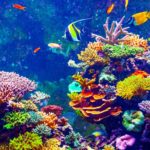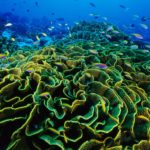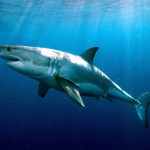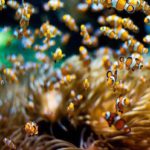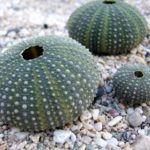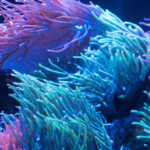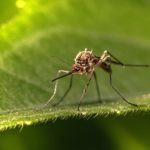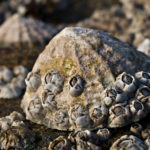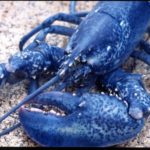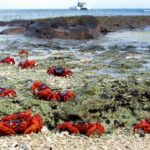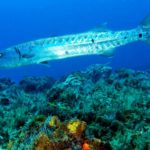Coral – information
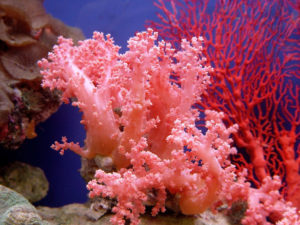 In some places, corals are quite close to the surface of the ocean. And this is fraught with another danger. Twice a day, the cycle of ebb and flow is repeated. During low tide, the water leaves and then many corals are exposed to the air, outside the usual habitat. If we add to this the tropical sun, we can assume that the corals will perish.
In some places, corals are quite close to the surface of the ocean. And this is fraught with another danger. Twice a day, the cycle of ebb and flow is repeated. During low tide, the water leaves and then many corals are exposed to the air, outside the usual habitat. If we add to this the tropical sun, we can assume that the corals will perish.
But no. For many centuries of struggle for life, these beings have adapted to such a change of environment. Once in the air, polyps begin to release mucus, which envelops the coral and prevents it from drying. The colony, which covers an area the size of a chessboard, can release up to five liters of this mucus. This mucus, like a sunblock, protects the delicate body of the polyp from drying out. It will be several hours and the tidal wave will cover the reef again. Corals will be in a familiar environment. Slime will be carried away by a tidal wave and again will play coral with all its usual colors, life on the reef will revive again. And so twice a day. The tide is low tide, the tide is low tide.
But there is a day in the life of the reef, perhaps two, which are of particular importance. Particular importance not only for this reef, but also for the vast ocean area. This is the time when the mystery of the continuation of life takes place. Usually this happens in the middle of November – the last month of spring in the Southern Hemisphere. On the night of a full moon or a new moon. This night there is a particularly strong tide, especially high, full water. And on this night, billions and billions of polyps release into the ocean eggs and spermatozoa.
Myriads of fertilized eggs are picked up by the current and carried for many kilometers. Then they settle on the bottom, on the reefs, and give rise to a new life, a new colony of polyps that will begin to create what is intended by nature – to build new reefs, islands. And so from year to year, from century to century.
These corals, which live in shallow waters, in the warm waters of the southern seas, rich in plankton and small animals, serving as food for polyps, live truly in hothouse conditions. Therefore, in these coral thickets, there are so many different marine inhabitants. From the smallest shrimp and to the huge grupers. Some whales, dolphins, killer whales, dugongs sail here.
